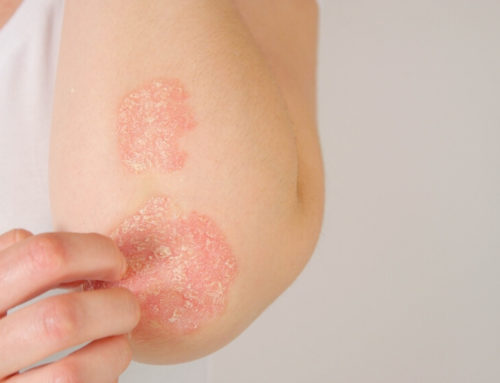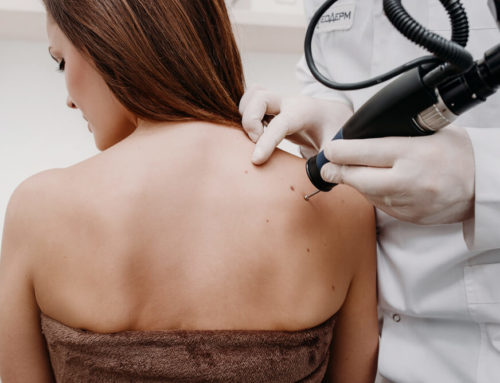In our body’s intricate tapestry, skin cells play a pivotal role. Examining them under the microscope unveils a complex world, especially when it comes to the realm of skin cancer. Understanding the answers to the question what do skin cells look like, and being aware of the signs of skin cancer is crucial for early detection and effective management.
Advanced Surgical Physicians is one of the best medical centers when it comes to the topic of skin cancer and patient care in the U.S. Their services of skin cancer treatment in Wellington, FL offer a comprehensive, all encompassing approach to this challenging condition and numerous satisfied patients are an excellent guarantee for the quality of both the expert team and the facilities.
What Do Skin Cells Look Like?
Under the scrutiny of a microscope, the seemingly ordinary skin cells reveal an extraordinary complexity. Skin cells, scientifically known as keratinocytes, constitute the resilient outer layer of the epidermis. These flattened, polygonal entities collaboratively create a barrier shielding our bodies from environmental stressors. Examining them closely unveils a mosaic of intricate structures, highlighting their role in maintaining skin integrity.
Signs of Skin Cancer
Identifying the signs of skin cancer is pivotal for timely intervention. Irregular moles, changes in size, shape, or color, and persistent itching or bleeding should raise red flags. Regular self-examinations and professional dermatological check-ups are essential in catching these warning signs early.
Here are some of the most common signs of skin cancer:
- Changes in Moles: Watch for alterations in the size, shape, or color of existing moles.
- Asymmetry: Check for moles or lesions with irregular shapes, as symmetry is a key factor in benign moles.
- Irregular Borders: Benign moles typically have smooth, well-defined edges, while skin cancer may exhibit uneven or jagged borders.
- Color Changes: Be alert to moles or lesions with uneven coloring or changes in pigmentation, such as multiple shades within the same growth.
- Diameter Increase: Keep an eye on moles or lesions that grow larger than the size of a pencil eraser (6 mm or more).
- Evolving Moles: Monitor any mole or spot that undergoes changes over time, including changes in size, shape, color, or elevation.
- Itching or tenderness: Persistent itching, tenderness, or pain in a particular area of the skin could be indicative of skin cancer.
- Bleeding or Oozing: Any mole or lesion that bleeds, oozes, or forms a crust should be examined by a dermatologist.
- New Growth: The appearance of a new mole or growth on the skin, especially in adulthood, warrants attention.
- Sores that Do Not Heal: Non-healing sores or ulcers on the skin that persist over time may be a sign of skin cancer, particularly squamous cell carcinoma.
- Changes in Texture: Noticeable changes in the texture of the skin, such as scaliness or the development of a rough surface, could be indicative of skin cancer.
- Satellite Lesions: The presence of smaller lesions surrounding a primary lesion may suggest an aggressive type of skin cancer, requiring prompt evaluation.
It is crucial to remember that these signs may vary based on the type of skin cancer, and any concerns should be promptly addressed by a healthcare professional for accurate diagnosis and appropriate treatment.
The Spectrum of Skin Cancer Types
Skin cancer is a broad term encompassing various types, each with unique characteristics. Basal cell carcinoma, squamous cell carcinoma, and melanoma are the most common. Understanding their differences is key to effective prevention and treatment strategies.
Basal Cell Carcinoma: Basal Cell Carcinoma (BCC) originates in the basal cells, which are responsible for skin regeneration. These cells, found in the epidermis, play a crucial role in maintaining the skin’s structural integrity. BCC is generally slow-growing and tends to remain localized, seldom spreading to other parts of the body.
This skin cancer often appears on sun-exposed areas like the face, neck, and hands. It manifests as pearly or waxy bumps, translucent nodules, or sores that don’t heal, making regular skin checks essential. Unlike more aggressive forms of skin cancer, basal cell carcinoma has a low metastatic risk, meaning it is less likely to spread to other organs. However, if left untreated, it can invade surrounding tissues and cause significant damage.
Various treatment modalities, including surgical excision, Mohs surgery, cryotherapy, and topical medications, are available for managing basal cell carcinoma. Early intervention not only ensures effective treatment but also minimizes potential disfigurement or complications. Regular dermatological screenings remain crucial for individuals at risk of developing this common form of skin cancer.
Squamous Cell Carcinoma: Squamous Cell Carcinoma (SCC) arises from the squamous cells, which form the epidermis, the outermost layer of the skin. These flat, scale-like cells play a vital role in protecting the body against environmental factors. Compared to basal cell carcinoma, SCC is considered more aggressive, with a higher potential for invading nearby tissues. Early detection is crucial to prevent its progression and reduce the risk of complications.
Visible signs of SCC include scaly red patches, open sores, or growths with an elevated border. Any persistent changes in the skin’s appearance, especially on sun-exposed areas, should prompt a thorough dermatological evaluation. Prolonged sun exposure is a significant risk factor for developing squamous cell carcinoma. Individuals with fair skin, a history of sunburns, and a weakened immune system are particularly susceptible.
Treatment options for SCC include surgical excision, Mohs surgery, radiation therapy, and topical medications. Timely intervention is essential to prevent the cancer from spreading and to ensure the best possible outcome for affected individuals.
Melanoma: Melanoma, the most aggressive form of skin cancer or often referred to as worst skin cancer, originates in the pigment-producing melanocytes. These cells are responsible for giving color to the skin, hair, and eyes. Melanoma is notorious for its rapid spread to other parts of the body, making early detection and intervention critical. Changes in the size, shape, color, or elevation of existing moles or the appearance of new, atypical moles should raise concerns.
The ABCDE rule aids in identifying potential melanomas: Asymmetry, irregular Borders, uneven Color, a Diameter larger than a pencil eraser, and Evolution (changes over time). While excessive sun exposure is a significant risk factor, genetics also play a role in melanoma development. Individuals with a family history of melanoma or those with fair skin and a history of sunburn are at higher risk.
Treatment options for melanoma include surgery, immunotherapy, targeted therapy, and radiation. A multidisciplinary approach involving dermatologists, oncologists, and surgeons is often necessary to create a tailored treatment plan for each patient.
Rare Skin Cancers
While basal cell carcinoma, squamous cell carcinoma, and melanoma dominate skin cancer discussions, there are rare skin cancers deserving attention. Dermatofibrosarcoma protuberans (DFSP) and Merkel cell carcinoma, though uncommon, can be aggressive and require specialized care.
- Dermatofibrosarcoma Protuberans (DFSP): DFSP is a rare, slow-growing cancer that starts in the middle layer of the skin. It often appears as a firm, raised, or protuberant mass. Despite its rarity, DFSP necessitates early intervention due to its potential to invade surrounding tissues.
- Merkel Cell Carcinoma: This rare and aggressive skin cancer often develops on sun-exposed areas. Manifesting as firm, painless nodules, it demands prompt attention. Early diagnosis and a multidisciplinary approach are crucial for managing Merkel cell carcinoma effectively.
Schedule a Check-Up!
A microscopic journey into skin cells and their intricate world is a vital step in understanding skin cancer. Recognizing what skin cells look like, being vigilant about signs of skin cancer, and comprehending the various skin cancer types, including rare ones, empowers individuals to prioritize their skin health.
Early detection remains the linchpin in the battle against skin cancer, and knowledge is the first line of defense. Stay informed, conduct regular self-checks, and consult a dermatologist promptly if any concerning signs arise. Call our center today and schedule a check-up in case you have started to notice something strange. Do not wait, every minute counts!





